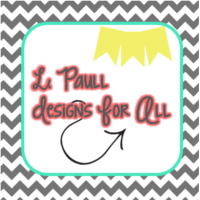Are you trying to develop thinking skills amongst your children? Do you want them to be aware of which thinking skills are needed for a particular situation? Are you seeking to develop self-aware and independent learners?
Of course we do…duh!!!
These questions, along with many other tricks from the AFL bag, have punctuated the majority of my teaching career thus far (and I am sure many of yours too).
Of course, the teaching of thinking skills is by no means a new idea, many famous approaches have been around for the best part of the last century and it is often upon these long established methods we fall back upon in the classroom.
P4C is widely loved as is the 'Building Learning Power' approach but personally I love to use Edward De Bono's 'Thinking Hats' to focus my children and develop their thinking skills in a range of situations.
If you have never come across the thinking hats approach before then click here to visit the 'De Bono for Schools' site.
My main reasons for loving this approach are:
1. It is visual and colour-coded
2. It makes sense!
3. The children love it
4. It is easily applicable to a wide range of classroom activities
De Bono in a nut-shell
There are 6 main strands to thinking- Processes, Facts, Emotions, Positives, Negatives and Creativity.
Each strand has a colour (enter the visual) which is a attached to a hat… ever heard 'Which hat am I wearing now?'(enter the making sense). Esentially, the hats focus the children's thinking to the particular strand e.g. if you are wearing the black hat then you need to focus your thinking on the negatives of a situation- 'What can go wrong? What is the problem here?'
De Bono in my classroom
Most teachers who use De Bono display hats in their classroom…I have sparkly hats which we like to wear (enter why the children love it!)
Of course, some strands are easier to teach than others so I like to introduce the hats in a
step by step manner.
I usually start with the white 'fact' hat and often introduce it at the start of the year through a range of activities such as 'All About Me' fact files and KWL grids at the start of our new Learning Challenge/ topic then build this skill into information seeking activities during
Guided Reading and Literacy lessons.
Following this I introduce the red 'emotions' hat when looking at characters and their actions in narrative texts and I also like to use the red hat during PSHE lessons.
Once the children are comfortable with the two most familiar ways of thinking, I then introduce the green 'creative' hat. I love to use it during a P.E. lesson- YES I'M TEACHING THINKING SKILLS IN A P.E. LESSON-where the children are faced with a problem and encourage them to discuss ideas, ANY ideas, for solving it before then moving on and introducing the yellow and black hats.The children are then able to weigh up the positives and negatives of each idea and decide on the best approach to solve the problem.
Finally, when I am confident the children are comfortable with the other strands of thinking, I introduce the blue 'process' hat.
I usually start off our next Learning Challenge/ topic with a 'Blue Hat Challenge' where we think about our BIG question and what we are going to need to do or learn in order to be able to answer it.
The final step is to introduce a situation where the children must work as a group, each taking on the role of a hat with the blue hat essentially facilitating the session, bringing everything together and charing the thinking in a similar way to a Reciprocal Reading session…I'll be honest, I'm yet to have this work as I would like it to with my 6 and 7 year olds but I've not given up hope and WILL try this again this year!
The whole process usually takes a term, or sometimes 2 depending on the class so please don't think I am hailing this as a quick- fix approach to developing thinking skills, it's not! But what it is is a tool for children to latch their thinking onto and, like all tools, we have to know how to use them in
order to be successful.
I'd love to know how you develop thinking skills in your classroom-
Do you have a blog post I should read?
Do you use De Bono?
Comment bellow and let me know...








No comments:
Post a Comment
Thanks so much for taking the time to leave a line Xx